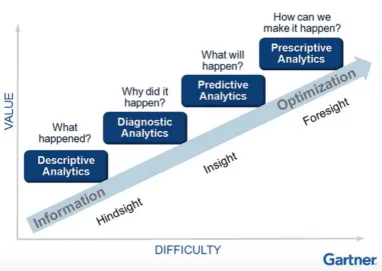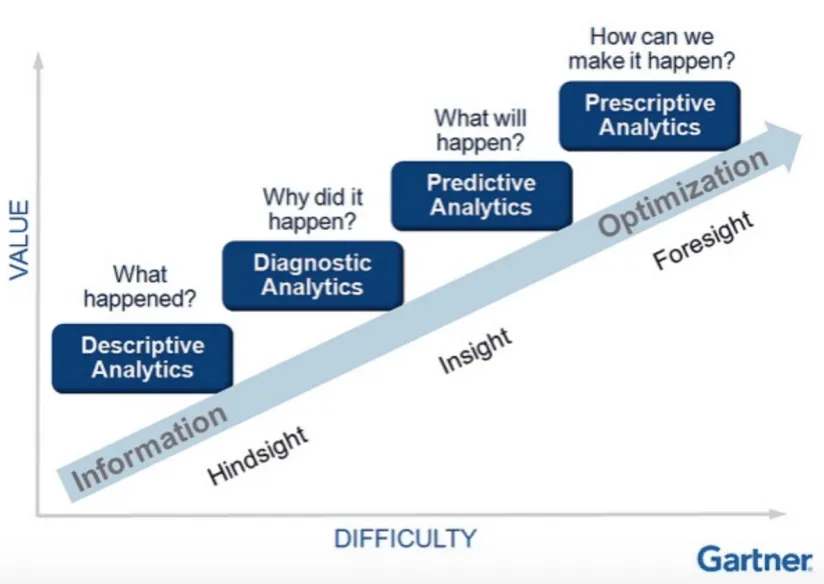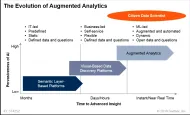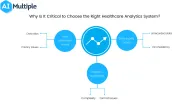What is Analytics? How is it Evolving in 2024?


Analytics is the science of producing insight from the patterns in complex data to make better decisions. It relies on statistics, predictive modeling and computer science.
Analytics is not a new concept for organizations, being a relevant topic since the mid-90s. Starting with sales and customer data, businesses applied analytics to their decision-making processes.
Thanks to advances in machine learning, analytics is evolving from being descriptive and diagnostic, to being predictive and prescriptive. In this article, we will describe the main four analytics approaches.
What are the different types of analytics?
Analytics can be split into 4 categories. While automating descriptive analytics was possible since the early days of computing, machine learning and AI enable companies to automate issue diagnostic, outcome prediction, and prescription of next actions.
- Descriptive Analytics (What happened?): Showing what is actually happening based on given data; often usually via dashboards and reporting tools.
- Diagnostic Analytics (Why did it happen?): Analyzing past performance to determine not only what happened, but why it happened.
- Predictive Analytics (What could happen?): Describing what scenarios are likely to occur, often in a predictive forecast.
- Prescriptive Analytics (What should we do?): Making suggestions about what should be done and their basis.
Descriptive analytics and visualizations
The most basic analytics is descriptive analytics, which answers the question of what happened in the past with a given data set. Almost every organization uses this type of analytics, which involves arithmetic operations, mean, median, max, percentage, etc. It gives organizations helpful insights about actions in the past, yet, causes of the problem may not be provided by descriptive analytics. That’s why data consultants don’t recommend companies to implement descriptive analytics only.
Diagnostic analytics
It provides answers about why something happened in the past. Companies that use diagnostic analytics are more likely to understand the causal relationships between actions that can be considered as a deep insight into the root causes of the events. It involves techniques of data discovery, data mining, and correlation while using statistical expressions such as probability, likelihoods and distribution of outcomes for the investigation.
Predictive analytics
At this stage, organizations get insights about possible results of their actions. Predictive analytics answers the question of what is going to happen in the future with data programming tools such as R, Phyton, IBM SPSS and RapidMiner. Predictive analytics provides and validates predictive models by using machine learning algorithms like random forests, learning, testing data. It expects the future will reflect a pattern similar to the precedent data. Organizations usually consult data scientists and machine learning experts to handle data for predictive analytics.
Prescriptive analytics
Analysts try to find out what action to take or how to take advantage of future opportunities with a given data set. Prescriptive analytics is not fail-proof, even though it uses advanced machine learning algorithms and business guidelines to analyze possible decisions and potential influences of those decisions. Success of prescribed analytics is highly dependent on how well your model includes external data besides your organization’s internal data set.
For more on analytics
If you are interested in learning more about the use cases of analytics in different sectors, read:
- Ultimate Guide to Top 10 Manufacturing Analytics Use Cases
- Healthcare Analytics Adoption Model: In-Depth Guide in 2022
- 8 Minutes Guide to Workforce Analytics [2022 update]
Finally, if you believe your business would benefit from leveraging an analytics solution, you can check our data-driven lists of analytics platforms.
And we will help you choose the best one tailored to your need:

Cem has been the principal analyst at AIMultiple since 2017. AIMultiple informs hundreds of thousands of businesses (as per similarWeb) including 60% of Fortune 500 every month.
Cem's work has been cited by leading global publications including Business Insider, Forbes, Washington Post, global firms like Deloitte, HPE, NGOs like World Economic Forum and supranational organizations like European Commission. You can see more reputable companies and media that referenced AIMultiple.
Throughout his career, Cem served as a tech consultant, tech buyer and tech entrepreneur. He advised businesses on their enterprise software, automation, cloud, AI / ML and other technology related decisions at McKinsey & Company and Altman Solon for more than a decade. He also published a McKinsey report on digitalization.
He led technology strategy and procurement of a telco while reporting to the CEO. He has also led commercial growth of deep tech company Hypatos that reached a 7 digit annual recurring revenue and a 9 digit valuation from 0 within 2 years. Cem's work in Hypatos was covered by leading technology publications like TechCrunch and Business Insider.
Cem regularly speaks at international technology conferences. He graduated from Bogazici University as a computer engineer and holds an MBA from Columbia Business School.
To stay up-to-date on B2B tech & accelerate your enterprise:
Follow on

Comments
Your email address will not be published. All fields are required.